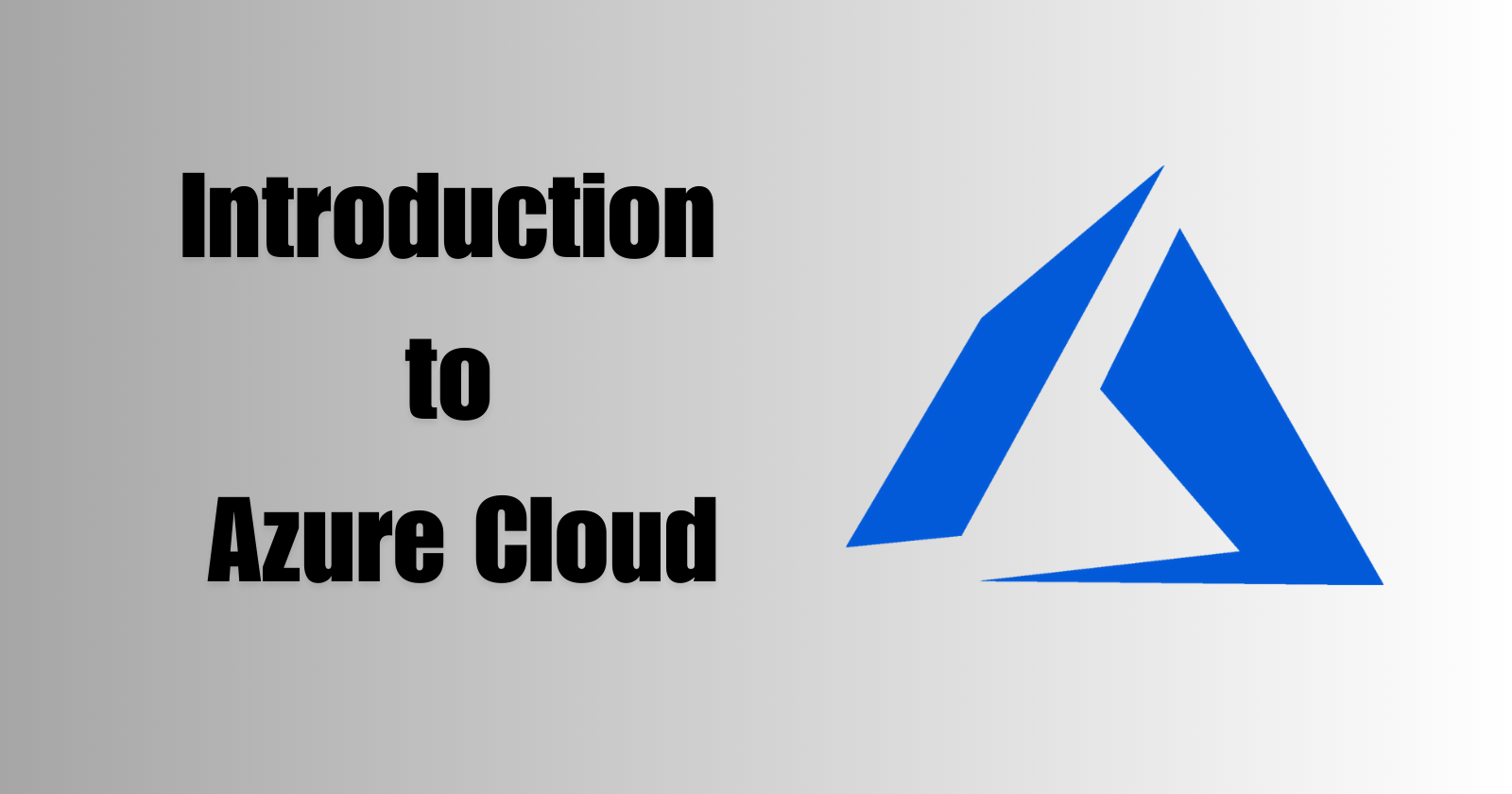Introduction to Azure Cloud: A Beginner's Guide
 Nikunj Vaishnav
Nikunj Vaishnav
In today’s digital world, the term “cloud” is thrown around a lot. If you’re curious about what that really means, and specifically what Azure Cloud is, this blog will give you a straightforward introduction.
What is Cloud Computing?
Cloud computing is like renting a computer (or many computers) over the internet. Instead of buying and managing your own physical hardware, you use resources such as storage, servers, databases, and networking from companies like Microsoft, Amazon, and Google. These resources are accessible from anywhere and can scale up or down based on your needs.
Enter Azure Cloud
Microsoft Azure is Microsoft’s cloud platform, providing a wide range of services to help businesses, developers, and individuals build, deploy, and manage applications. It offers computing power, storage, and networking solutions without needing to maintain your own hardware.
Think of Azure as a massive virtual warehouse full of powerful computers and tools that anyone can use.
Why Choose Azure?
Azure is one of the leading cloud platforms, and here’s why:
Global Reach: Azure operates in 60+ regions worldwide, making it easy for businesses to serve customers anywhere.
Wide Range of Services: Azure doesn’t just offer basic computing power. It provides services like AI, machine learning, databases, networking, analytics, IoT, and much more.
Hybrid Cloud: Azure integrates well with on-premise systems. This means you can blend your existing infrastructure with the cloud easily, using Azure’s hybrid cloud capabilities.
Security: With built-in security features and compliance certifications, Azure provides peace of mind for businesses needing robust security.
Key Components of Azure
Let’s break down some of the main services Azure offers:
1. Azure Compute
This is the engine that provides the raw computing power. Think of it as virtual machines (VMs) or servers that can run applications, websites, or any software you need.
2. Azure Storage
Need a place to store your data? Azure has a range of storage solutions, from simple file storage to large-scale databases. You can store anything from documents to huge amounts of data generated by apps.
3. Azure Networking
Azure provides the tools needed to securely connect your cloud resources to the internet or other private networks, ensuring that everything is fast, secure, and reliable.
4. Azure Databases
Whether you’re using traditional relational databases (like SQL) or non-relational databases (NoSQL), Azure has options to store and manage your data with minimal effort.
5. Azure AI and Machine Learning
Azure isn’t just about storage and servers. It also offers powerful AI tools, allowing businesses to build intelligent applications. Azure’s AI capabilities can help with everything from chatbots to predictive analytics.
How Does Azure Work?
Azure works on a pay-as-you-go model, which means you only pay for what you use. If you need more storage or computing power, you can scale up; if you need less, you scale down. This flexibility is one of the biggest benefits of cloud computing.
For example:
You can rent a small amount of storage to back up your files for a few dollars a month.
Or you can run large applications serving thousands of users, all without having to invest in expensive hardware upfront.
Azure Use Cases
Here are a few real-world examples of how Azure is used:
Web Hosting: Many businesses host their websites and apps on Azure because it’s scalable and reliable.
Data Backup and Disaster Recovery: Azure provides off-site data backup and quick recovery options in case of any mishap.
Big Data and Analytics: Companies use Azure’s analytics services to crunch massive amounts of data and gain insights.
Gaming: Game developers use Azure to power multiplayer experiences, handle game updates, and store player data.
AI-powered Apps: Businesses are building smart apps using Azure’s AI tools to deliver features like image recognition, recommendation engines, and more.
Getting Started with Azure
The best part about Azure is that it's accessible to everyone—from small startups to massive enterprises. To get started:
Create an Azure Account: Microsoft offers free credits for new users to explore their platform.
Explore Azure Portal: The Azure Portal is the main interface where you can manage your services. It’s user-friendly and provides a centralized view of your resources.
Try Popular Services: Start with basic services like virtual machines (VMs) or storage to get the hang of how Azure works.
Conclusion
Azure Cloud is a powerful, flexible, and scalable platform that offers endless possibilities for businesses and developers alike. Whether you're building a small app, managing big data, or exploring AI, Azure has the tools and resources to get you there.
With its global reach, secure infrastructure, and vast array of services, Microsoft Azure is helping shape the future of technology. If you haven’t explored Azure yet, now’s a great time to dive in!
Connect and Follow:
Like👍 | Share📲 | Comment💭
Subscribe to my newsletter
Read articles from Nikunj Vaishnav directly inside your inbox. Subscribe to the newsletter, and don't miss out.
Written by

Nikunj Vaishnav
Nikunj Vaishnav
👋 Hi there! I'm Nikunj Vaishnav, a passionate QA engineer Cloud, and DevOps. I thrive on exploring new technologies and sharing my journey through code. From designing cloud infrastructures to ensuring software quality, I'm deeply involved in CI/CD pipelines, automated testing, and containerization with Docker. I'm always eager to grow in the ever-evolving fields of Software Testing, Cloud and DevOps. My goal is to simplify complex concepts, offer practical tips on automation and testing, and inspire others in the tech community. Let's connect, learn, and build high-quality software together! 📝 Check out my blog for tutorials and insights on cloud infrastructure, QA best practices, and DevOps. Feel free to reach out – I’m always open to discussions, collaborations, and feedback!